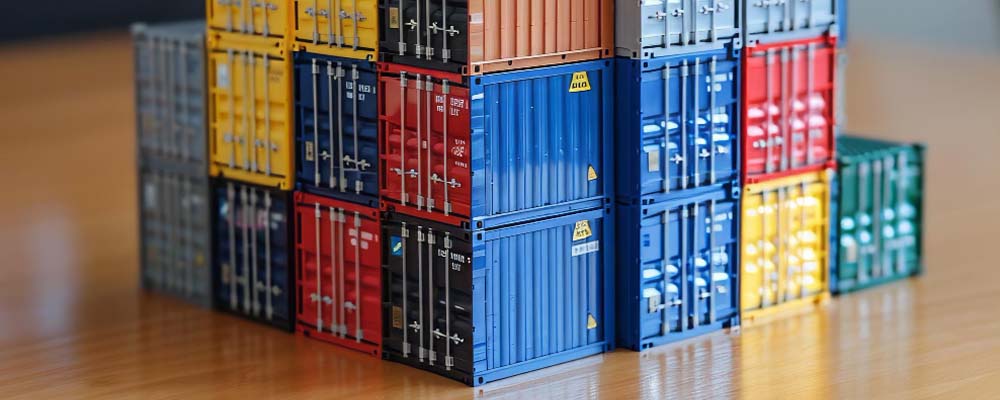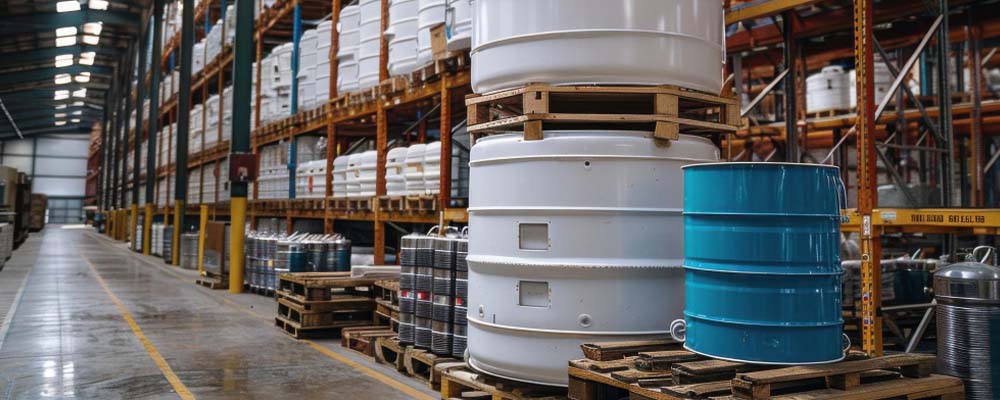
In the dynamic world of logistics, choosing the right container size and type can make or break your shipping operations. It’s not just about fitting your goods into a box; it’s about maximizing efficiency, cutting costs, and ensuring the safety of your cargo. For freight forwarding companies, logistics providers, importers, exporters, customs brokers, manufacturers, producers, and e-commerce businesses, understanding container options is crucial. This guide dives deep into the various container sizes and types available, helping you make informed decisions that boost your business.
The Importance of Choosing the Right Container
Selecting the correct container is more than a logistical necessity; it’s a strategic decision that impacts cost, efficiency, and safety. Missteps can lead to delays, damage, and increased expenses.
Choosing the right container can significantly reduce shipping costs. By optimizing space, you minimize the number of shipments and avoid unnecessary expenses.
Containers are designed to protect goods from environmental factors and physical damage. The right choice ensures your cargo arrives in perfect condition.
Standard Containers – Your Go-To Solution
Standard containers, also known as dry containers, are the most common type used in shipping. They come in various sizes but share a uniform structure.
- 20-Foot Containers are ideal for heavy, dense cargo. They can handle up to 28,000 kg and are perfect for smaller shipments.
- 40-Foot Containers offer more space for lighter, bulkier items. They are widely used for general cargo like clothing, furniture, and electronics.
- 40-Foot High-Cube Containers provide an additional foot in height, accommodating taller items and increasing overall capacity.
Reefer Containers – Keeping It Cool
Reefer containers, or refrigerated containers, are essential for transporting perishable goods that require temperature control.
- 20-Foot Reefer Containers are compact but effective for smaller quantities of perishable items like fresh produce and pharmaceuticals.
- 40-Foot Reefer Containers offer more space while maintaining precise temperature control, ideal for larger shipments of frozen goods and dairy products.
- High-Cube Reefers provide extra height for bulky perishables, ensuring optimal use of space without compromising temperature regulation.
Open-Top Containers – Flexibility at Its Best
Open-top containers are perfect for cargo that can’t be loaded through standard doors, offering flexibility for oversized items.
- 20-Foot Open-Top Containers are suitable for heavy machinery and construction materials, with the added advantage of easy top loading and unloading.
- 40-Foot Open-Top Containers accommodate larger, bulkier items like industrial equipment and large pipes.
- High-Cube Open-Top Containers provide additional vertical space, making them ideal for extra tall cargo that still requires the open-top design.
Flat Rack Containers – For the Oversized and Heavy
Flat rack containers are designed for oversized and heavy cargo that doesn’t fit into standard containers.
- 20-Foot Flat Rack Containers handle heavy items like machinery, vehicles, and industrial equipment, offering sturdy support and easy loading from the sides.
- 40-Foot Flat Rack Containers provide more room for large, heavy cargo, ensuring secure transport of items like steel coils and construction materials.
- Collapsible Flat Racks offer versatility by allowing the sides to be folded down, making them easier to store and transport when empty.
 Tank Containers – Liquid Assets
Tank Containers – Liquid Assets
Tank containers are specifically designed for transporting liquids, gases, and powders, ensuring safe and efficient movement of these substances.
- 20-Foot Tank Containers are the standard size for transporting hazardous and non-hazardous liquids, offering robust construction and secure fittings.
- Specialty Tank Containers cater to specific needs, such as food-grade tanks for edible liquids and chemical tanks designed for corrosive substances.
Pallet-Wide Containers – Maximizing Space Efficiency
Pallet-wide containers are designed to optimize space for pallets, making them an ideal choice for businesses that frequently use palletized cargo.
- 20-Foot Pallet-Wide Containers accommodate more pallets than standard containers, reducing the need for additional shipments and maximizing space efficiency.
- 40-Foot Pallet-Wide Containers offer even more capacity, allowing businesses to transport larger quantities of palletized goods in a single trip.
Ventilated Containers – Fresh Air for Your Cargo
Ventilated containers are essential for goods that require air circulation to prevent moisture buildup and spoilage during transport.
- 20-Foot Ventilated Containers are ideal for agricultural products like coffee, cocoa, and grains, ensuring proper airflow throughout the shipment.
- 40-Foot Ventilated Containers provide more space for large quantities of sensitive goods, maintaining optimal conditions to preserve quality.
Insulated Containers – Temperature Stability
Insulated containers maintain a stable temperature for cargo that must be protected from extreme heat or cold, without requiring active refrigeration.
- 20-Foot Insulated Containers are suitable for temperature-sensitive goods like pharmaceuticals and certain food products, ensuring consistent conditions during transit.
- 40-Foot Insulated Containers offer greater capacity while maintaining the same level of temperature stability, ideal for larger shipments of sensitive items.
Hardtop Containers – Extra Durability
Hardtop containers are built for durability and are perfect for cargo that needs extra protection from external elements and potential impacts during transport.
- 20-Foot Hardtop Containers provide robust protection for heavy and valuable items, ensuring they remain secure and undamaged throughout the shipping process.
- 40-Foot Hardtop Containers offer the same level of durability with added space, making them ideal for transporting larger quantities of high-value goods.
Specialized Containers – Tailored for Unique Needs
Specialized containers are designed to meet the unique requirements of certain types of cargo, offering solutions that standard containers can’t provide.
- Autoclave Containers are used for transporting high-temperature items, ensuring they remain safe and intact during transit.
- Offshore Containers are designed for use in offshore environments, providing enhanced durability and safety features for transporting goods to and from offshore platforms.
The Future of Container Innovation
The logistics industry is constantly evolving, and container design is no exception. Innovations such as smart containers equipped with IoT devices are transforming the way businesses manage their shipments.
- Smart Containers offer real-time tracking and monitoring, providing valuable data on the condition and location of cargo throughout its journey.
- Eco-Friendly Containers are being developed to reduce the environmental impact of shipping, using sustainable materials and design practices to promote greener logistics solutions.
 Conclusion
Conclusion
Choosing the right container size and type is a strategic decision that can significantly impact your shipping operations. Understanding the various options available and their specific applications will help you optimize efficiency, reduce costs, and ensure the safety of your cargo.
For freight forwarding companies, logistics providers, importers, exporters, customs brokers, manufacturers, producers, and e-commerce businesses, the right container can make all the difference. By staying informed and making thoughtful choices, you can enhance your shipping processes and achieve greater success in the competitive world of logistics.




 Tank Containers – Liquid Assets
Tank Containers – Liquid Assets Conclusion
Conclusion



